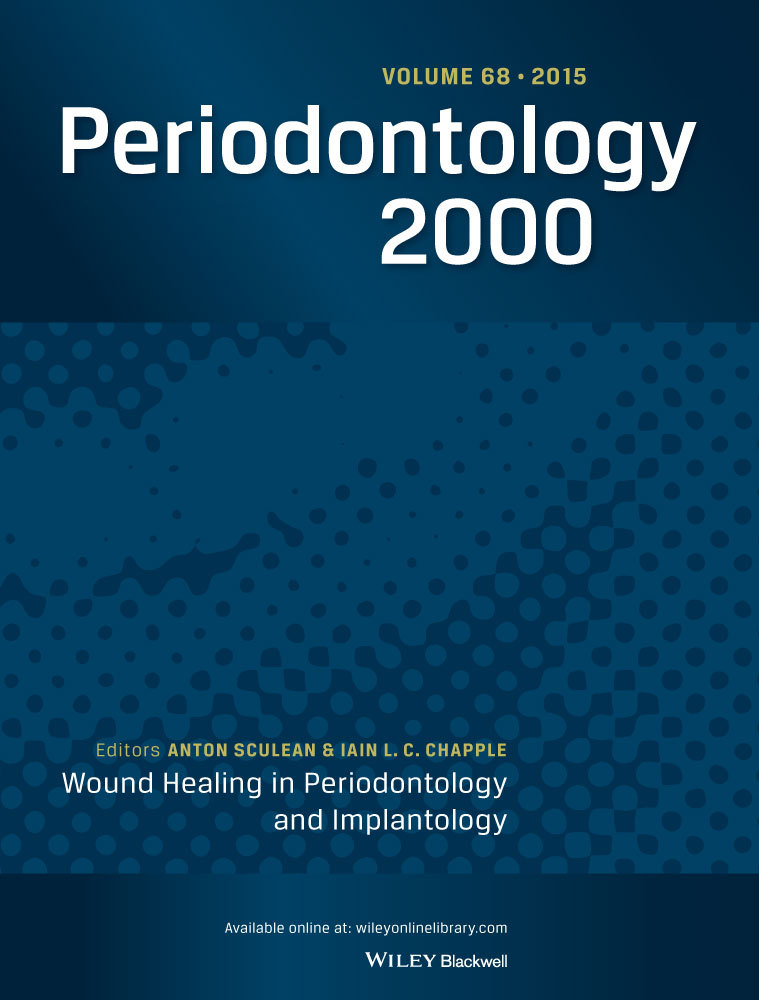第三磨牙拔除术后的自体血小板浓缩物:系统综述。
IF 15.7
1区 医学
Q1 DENTISTRY, ORAL SURGERY & MEDICINE
引用次数: 0
摘要
下颌第三磨牙手术拔除后往往会出现疼痛、肿胀、三趾挛缩等术后后遗症。本系统综述探讨了在第三磨牙拔牙窝中应用不同自体血小板浓缩物(APC)的益处。本次系统性综述使用了 PubMed、EMBASE、Web of Science 和 Scopus 等数据库,最初共检索到 544 篇论文。搜索范围缩小到 2024 年之前发表的随机对照试验(RCT,n = 59),所有这些试验都比较了在手术拔除的下颌第三磨牙牙槽窝中应用 APC 与无辅助愈合(血凝块)的结果。大多数研究性临床试验主要评估了 APC 对术后后遗症的影响。一些 RCT 研究了软组织和硬组织的愈合情况。有 11 项研究使用了 PRP,3 项使用了 PRGF,45 项使用了 L-PRF。详细分析显示,不同研究之间存在很大的异质性,因此无法进行荟萃分析。此外,偏倚风险也很高。在大多数研究中,APC 的应用在统计学上显著减少了术后后遗症(疼痛强度降低、镇痛剂用量减少、术后水肿减轻、三趾畸形和牙槽骨炎发生率降低),同时软组织愈合更快,骨愈合的质量和数量也更好。少数研究报告称,第二磨牙远端牙周参数存在明显差异。本文章由计算机程序翻译,如有差异,请以英文原文为准。
Autologous platelet concentrates after third molar extraction: A systematic review.
Surgical removal of impacted mandibular third molars is often followed by postoperative sequelae like pain, swelling, trismus, etc. This systematic review explored the benefits of applying different autologous platelet concentrates (APCs) in the extraction socket of third molars. For this systematic review, PubMed, EMBASE, Web of Science, and Scopus have been utilized, initially yielding 544 papers. The search was narrowed to randomized controlled trials (RCTs, n = 59) published before 2024, all comparing the outcome of applying APCs in the extraction socket of surgically removed impacted mandibular third molars with unassisted healing (blood clot). Most RCTs primarily assessed the impact of APCs on postoperative sequelae. Some RCTs looked at soft- and hard-tissue healing. Eleven studies used PRP, three PRGF, and 45 L-PRF. A detailed analysis revealed a large heterogeneity between studies rendering a meta-analysis impossible. Moreover, the risk of bias was considered high. In the majority of RCTs, the application of an APC resulted in statistically significant reductions of postoperative sequelae (lower pain intensity, lower consumption of analgesics, less postoperative edema, and a lower incidence of trismus and alveolar osteitis), as well as a faster soft tissue healing, and qualitatively and quantitatively better bone healing. A minority of studies reported significant differences in periodontal parameters distally from the second molar.
求助全文
通过发布文献求助,成功后即可免费获取论文全文。
去求助
来源期刊

Periodontology 2000
医学-牙科与口腔外科
CiteScore
34.10
自引率
2.20%
发文量
62
审稿时长
>12 weeks
期刊介绍:
Periodontology 2000 is a series of monographs designed for periodontists and general practitioners interested in periodontics. The editorial board selects significant topics and distinguished scientists and clinicians for each monograph. Serving as a valuable supplement to existing periodontal journals, three monographs are published annually, contributing specialized insights to the field.
 求助内容:
求助内容: 应助结果提醒方式:
应助结果提醒方式:


